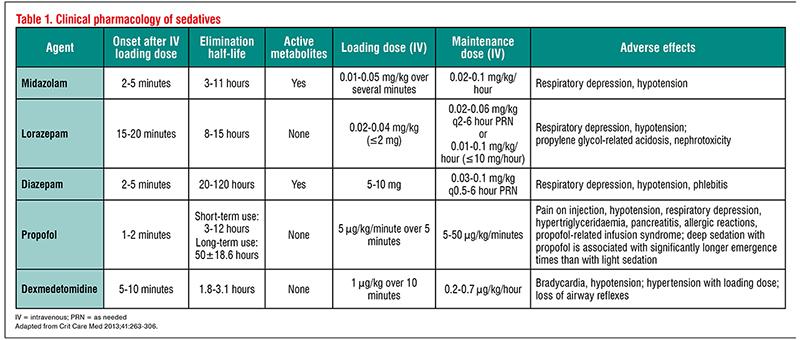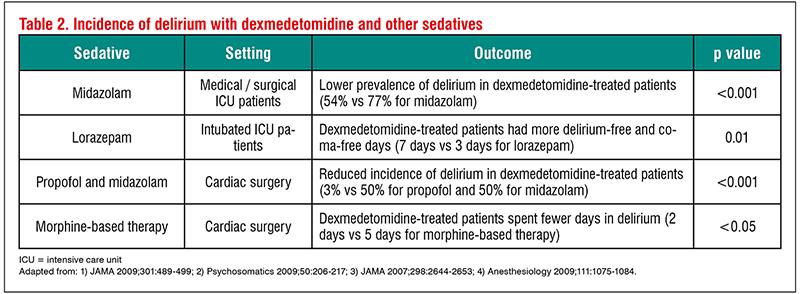Achieving optimal sedation and smooth extubation in ICU settings





Pain, agitation and delirium occur frequently in patients admitted to the intensive care unit (ICU). Each of these patients requires a different level of pain control and depth of sedation to achieve optimal outcomes. Dr. George Ng, Specialist in Critical Care Medicine in Hong Kong, shared his experience in the provision of sedation in different ICU settings, focusing on the use of sedatives such as benzodiazepines, propofol and dexmedetomidine (Precedex®, Hospira [a Pfizer company]) for patients with different disease severity and in the process of extubation.
Achieving optimal sedation
“Sedatives are commonly prescribed to ICU patients to treat anxiety and agitation. Optimal sedation is achieved when a lightly sedated patient feels calm and comfortable while being easily arousable and able to respond and communicate,” explained Ng. “Although management seems easier if patients are comatose with deep sedation, the downside is they will need a longer time to awakening following sedative termination. This will in turn increase the risk of an adverse outcome, as the length of ICU stay and duration of mechanical ventilation will be prolonged. Therefore, light rather than deep sedation should be given to ICU patients unless clinically contraindicated.”
“Sedatives should be titrated every few hours to maintain optimal sedation in view of the rapidly changing body condition of ICU patients,” he continued. “The titration should be performed based on valid and objective scales, such as the Richmond Agitation-Sedation Scale.”
“Light sedation can be achieved with dexmedetomidine or low-dose propofol infusion,” said Ng. “Benzodiazepine or high-dose propofol is administered to those who need deep sedation.”
Unlike propofol and benzodiazepines, dexmedetomidine is associated with minimal respiratory depression and has a fast offset of action. (Table 1) [Crit Care Med 2013;41:263-306]

“Moreover, dexmedetomidine is analgesic sparing, and may therefore reduce the dosage of opioids for pain control in ICU settings,” he suggested. “Hypotension and bradycardia are the most common adverse events associated with dexmedetomidine in my practice. If any of these adverse events occur and other possible causes are ruled out, physicians should consider dose reduction or discontinuation of dexmedetomidine.”
“Benzodiazepines should be avoided whenever possible due to their well-known withdrawal symptoms such as agitation and delirium,” added Ng.
Avoiding delirium
Delirium is characterized by the acute onset of cerebral dysfunction with a change or fluctuation in baseline mental status, inattention, and either disorganized thinking or an altered level of consciousness. It is frequently reported in patients admitted to ICUs, and is associated with increased mortality as well as prolonged ICU and hospital length of stay. [Crit Care Med 2013;41:263-306]
“About half of my ICU patients experience delirium. It occurs more often in those with a long ICU stay and critical illnesses such as multi-organ failure,” said Ng. “Patients with delirium are prone to self-extubation and catheter dislodgement, which may lead to complications such as bleeding, damages to the lung and life-threatening vascular air embolism.”
“Dexmedetomidine is associated with a lower incidence of delirium, and may therefore be more desirable in ICU settings,” he suggested. (Table 2) [JAMA 2009;301:489-499; Psychosomatics 2009;50:206-217; JAMA 2007;298:2644-2653; Anesthesiology 2009;111:1075-1084] “The American Society of Critical Care Medicine recommends its use over benzodiazepines to reduce the duration of delirium unrelated to alcohol or benzodiazepine withdrawal in affected ICU patients.” [Crit Care Med 2013;41:263-306]

Sedation strategies for different disease severity
Different sedation modalities should be employed to help patients achieve different goals during their ICU stay.
“The majority of patients admitted to ICUs require short-term mechanical ventilation and monitoring following a surgical operation,” noted Ng. “Light sedation with propofol or dexmedetomidine should be prescribed to these patients to prevent and treat anxiety and agitation.”
“A deep level of sedation and strong pain control are required in patients with severe illnesses such as severe pneumonia and acute respiratory distress syndrome. Benzodiazepine and opioid infusions may be more preferable to help these patients tide over the acute phase of the disease,” he advised. “Once the patient’s condition becomes stable, I will consider switching from deep to light sedation with a gradual switch of medications from benzodiazepines to low-dose propofol or dexmedetomidine.”
Weaning from mechanical ventilation
“Mechanical ventilation increases ICU patients’ risk of pneumonia and deep vein thrombosis, as well as lung complications such as pneumothorax and barotrauma in those admitted with lung pathologies,” explained Ng. “Extubation should be considered once the patient shows stable vital signs and disease while being conscious and cooperative.”
“It’s important to keep a patient mentally responsive and aware to prevent aspiration during extubation. Therefore, light sedation with dexmedetomidine or propofol is more desirable in this setting,” he stressed. “Due to dexmedetomidine’s minimal effect on respiratory depression, it can be safely administered during extubation to provide analgesic and sedative effects. In contrast, propofol should be stopped several hours prior to extubation to ensure there is no propofol-induced respiratory depression before the extubation procedure.”
“In my practice, the selection between dexmedetomidine and propofol depends on whether sedation is needed during extubation,” added Ng. “In patients who frequently show symptoms of agitation during ICU stay, dexmedetomidine may be a better option as it ensures a smooth weaning process.”
Dexmedetomidine: Benefits and suggestion
“The daily cost of ICU care is relatively high compared to care in other units. This is attributable mainly to the manpower required to maintain intensive nursing care,” explained Ng. “Although dexmedetomidine is more expensive than benzodiazepines, it ensures smooth extubation, and thus potentially shortens patients’ time on mechanical ventilator and ICU length of stay. The cost reduction achieved with these benefits outweighs the higher cost for prescription of dexmedetomidine.”
“Currently, dexmedetomidine is approved for continuous infusion not exceeding 24 hours. However, I believe that its use for >24 hours may be possible, which requires further studies to confirm,” he suggested.